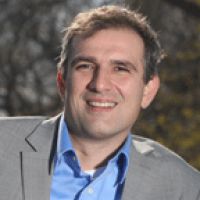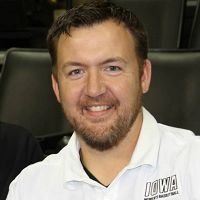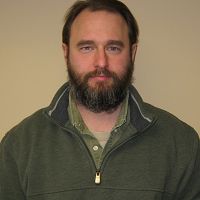Papanicolaou et al., 2011
Agricultural soil erosion and soil organic carbon (SOC) dynamics in the U.S. Midwest: Bridging the knowledge gap across scales
Papanicolaou, A.N., Dermisis, D., Wacha, K., Abban, B., and Wilson C. (2011)
The Geological Society of America Meeting
-
IML, INVESTIGATOR
-
IML, GRAD STUDENT
-
IML, INVESTIGATOR
-
IML, GRAD STUDENT
Abstract
In this investigation our overarching goal is to investigate short-term SOC dynamics across intensely managed landscapes. Short-term SOC storage dynamics are more strongly affected by event, seasonal, and inter-annual variability in runoff- and tillage-induced erosion and are of paramount importance in the Midwest for assessing the benefits of conservation and altered management practices for increasing SOC storage (e.g., Wilson, Papanicolaou, Abaci, 2009). Short-term changes in SOC, under different Land Use/Land Cover (LU/LC) schemes, can also influence the accurate quantification of the long-term changes in SOC storage.
A central component of processes in these landscapes is related to the interactions of hydrological and biogeochemical cycles that are augmented or attenuated by different LU/LC schemes, such as different crop rotations, tillage regimes, and timelines of operations. Thus, we will link two process-based models, a hydrologic/erosion model that includes detailed management practices (WEPP: Water Erosion Prediction Project) and a biogeochemical model (DAYCENT: Daily time-step version of CENTURY) to significantly advance understanding of the influence of spatial and temporal patterns of key biophysical factors, including extreme event magnitude, on SOC dynamics and storage under different LU/LC schemes. In order to reflect better the reality of landscape conditions, such as surface roughness and topographic changes, this linkage of WEPP and DAYCENT will be landscape-oriented, necessitating the use of advanced geospatial tools. We will use geospatial tools (Garbrecht and Martz, 1997; Cochrane and Flanagan, 1999) to overcome limitations with drainage identification and portray better water, soil, and SOC pathways for providing more accurate estimates of unevenly distributed SOC and its storage. This research program will test the development of the integrative model and associated geospatial tools at small scales (hillslope to 1st order watersheds) so they can eventually be applied to large scales.
The planned analysis is a critical component of future strategies focused on the sustainability of healthy soils and GHG mitigation at the watershed scale.
Citation
Papanicolaou, A.N., Dermisis, D., Wacha, K., Abban, B., and Wilson C. (2011): Agricultural soil erosion and soil organic carbon (SOC) dynamics in the US Midwest: Bridging the knowledge gap across scales. The Geological Society of America Meeting.
Explore Further




